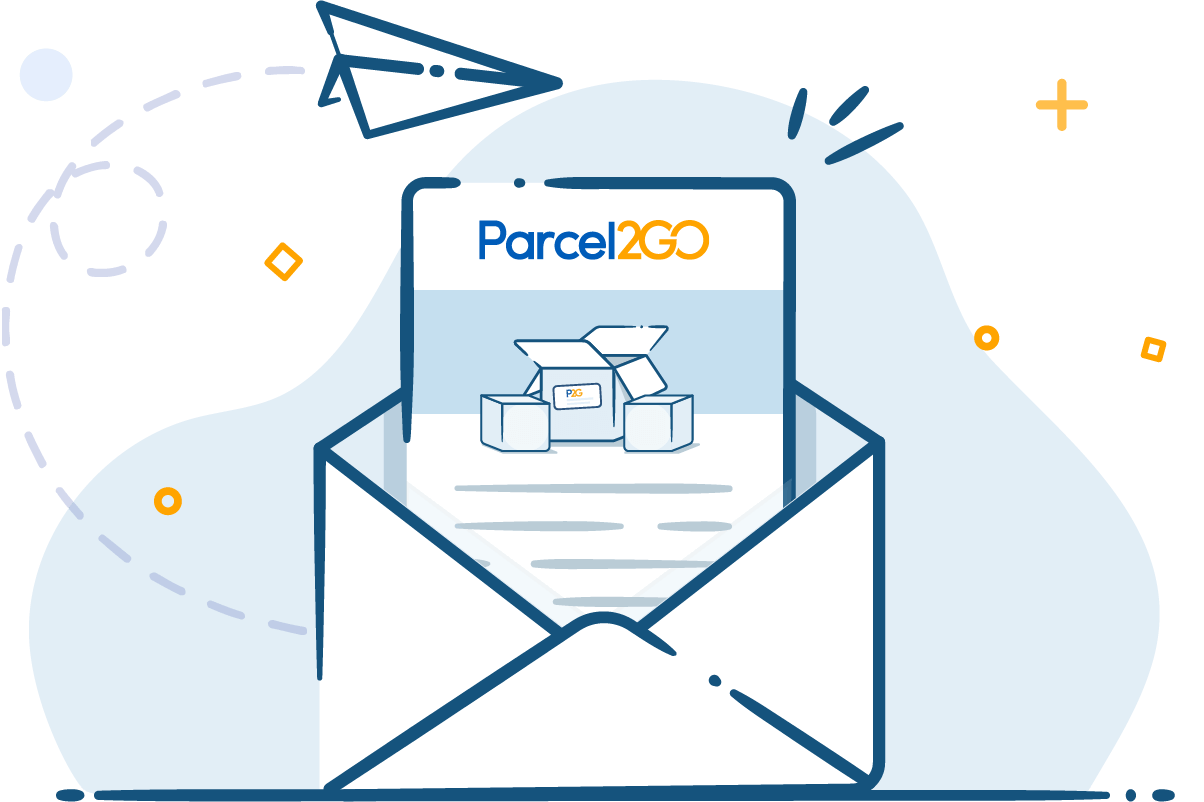In 2016, the UK spent a whopping £60 billion online.
And that’s not all. This figure is expected to grow again in 2017 by over 15%, taking this year’s projected total up to nearly £70 billion.
It may seem obvious to say it, but selling online these days can be very lucrative indeed. But how do you know where to begin? Which site offers the best benefits to someone looking to sell their unwanted gifts, or begin to build on online business?
We’ve put together a quick comparison guide of the top online marketplaces in the UK to ensure you start 2017 on the right foot, no matter what it is you have to sell.
The Big Players

Amazon.com
Established: 1994
Monthly traffic: 2.6 billion
Listing fees for new sellers: £0.75 per item
Commission on sales: Around 15%, with a £1 minimum fee
Fixed price? Yes
Not only is Amazon the oldest online marketplace on our list (this year it’ll celebrate reaching the ripe old age of 23), but it’s also the biggest. Each month it receives over 2.6 billion visits from customers all over the world, and boasts annual revenues of over $100 billion.
In the last decade or so, Amazon has firmly established itself as theonline shopping website. As such, it’s one of the first go-to’s for any new online business seller.
The Pros
- Trust — Sticking to high standards with its third-party sellers has made Amazon one of the most trusted e-commerce websites in the world. If you’re a seller without an established brand behind you, Amazon can provide a much-needed boost to your credibility.
- Visibility — Amazon is the biggest internet retailer in the world. If you can get featured in the Amazon Buy Box, your products will get more exposure than they might on any other e-commerce website.
The Cons
- High fees — Amazon’s seller fees are among the highest out there, meaning new sellers feel the pinch come payday. Whether or not the costs are worth the exposure is down to the seller to decide.
- Competing with Amazon — Though Amazon leaves small-time third-party sellers to their own devices, you could face some stiff competition if your products start selling really well. Amazon will stock anything it deems popular enough, and if they stock yours, you could face being seriously undercut by a company whose pockets are very deep indeed.
Learn About Our Amazon Delivery Tools

eBay
Established: 1995
Monthly traffic: 1.2 billion
Listing fees for new sellers: First 20 listing free, then £0.35 each
Commission on sales: 10% including P&P
Fixed price? No
eBay has for the past two decades been the ultimate ‘flog it’ site for used-goods sellers, thanks to its auction format. A lot of sellers will divulge the unrivalled satisfaction in seeing an item sell for twice, even three times its listed price because of a bidding war between two enthused buyers.
Though its commercial growth is slowing, eBay is still the biggest auction site out there, and has plenty of life in it yet.
The Pros
- Easy to set up — eBay is one of the easiest platforms for sellers to set up their listings on. If you’re new to selling online, it’s one of the most accessible ways to get started.
- Value your items — The biggest advantage of eBay’s auction format is that if you’re unsure of an item’s true value, you can simply list it at the price you think it’s worth and monitor the attention it gets. Ultimately, it’ll sell at the price that buyers are willing to pay for it, which can sometimes be far more than you might expect.
The Cons
- Competition — Everyone and their dog is selling something on eBay. Though you won’t have to directly compete with eBay in the same way you could with Amazon, you will almost always be competing with hundreds of other sellers. Standing out from the crowd can be very difficult indeed if you’re pitching a popular product.
- Removal fees — Decided that you don’t want to sell that item anymore? It’ll still cost you. On top of eBay’s regular fees (a 10% commission on most items, plus listing fees), you’ll have to pay a removal fee to un-list an item.
Learn About Our eBay Delivery Tools
Etsy
Established: 2005
Monthly traffic: 200 million
Listing fees for new sellers: £0.16 per item
Commission on sales: 3.5%
Fixed price? Yes
Over the last decade, Etsy has grown to an impressive size thanks to the showcasing of its unique and niche products on sites like Pinterest and Instagram. It’s the go-to site for anything hand-made, and has generated a plentitude of success stories for sellers with talent.
The Pros
- Ease of use — Etsy is only a letter away from ‘easy’, and rightfully so. It was voted easiest online marketplace to use by a poll of over 12,000 sellers.
- Simple pricing model — Unlike eBay and Amazon, Etsy uses a fixed pricing model. That makes it far easier to keep track of your overheads while you’re selling, and often ends up cheaper too.
The Cons
- Niche range of goods — The fact of the matter is that if what you’re selling isn’t handmade, it probably won’t go far on Etsy. Therefore it doesn’t cater for building an online selling business unless you have a knack for crafting unique products.
- Removal of customer service features — Due to its aggressive expansion, Etsy was forced to remove several of its customer service features a few years ago, including its live chat facility. That means if you encounter any issues setting up your Etsy shop, you’ll struggle to get help.
Learn About Our Etsy Delivery Tools
Small(ish) but Mighty

Gumtree
Established: 2000
Monthly traffic: 66 million
Listing fees for new sellers: Free
Commission on sales: None
Fixed price? No
Gumtree is eBay’s little brother in many respects — it was even acquired by eBay for an undisclosed sum in 2005. It now operates as one of the UK’s leading platform for classified ads, but it’s also used for selling items too.
Unlike eBay, Gumtree allows users to post listings for free the vast majority of the time, and is mostly employed for the sale of used items.
The Pros
- Free listings— You don’t need to pay a penny to sell most items on Gumtree. The fact that there’s no overheads to factor in for most products makes Gumtree hugely appealing for sellers looking to tighten up their budgets.
- Discretionary — Gumtree’s business model is sort of discretionary, which means buyers will contact you about an item if they want to purchase it. If you’re a good haggler, you can seal the deal a lot faster than you might on eBay, where you’d need to wait for an auction to end.
The Cons
- Lack of trust — Gumtree has been the unfortunate source of plenty of fraud over the last few years, and it’s not just buyers that have been burned, but sellers too. Gumtree customers are particularly vulnerable because its ‘hands-off’ approach means that users are not vetted before they sell their items. Naturally, there are lower levels of trust between customers and sellers than on more reputable sites like Amazon.
- Not ideal for multiple sales — Because Gumtree is essentially a classified ads board, it’s not the best environment for anyone wanting to create a sustainable business. One-off sales are fine, but you’ll struggle to get regular transactions compared to eBay and Amazon.

Bonanza
Established: 2007
Monthly traffic: 6.7 million
Listing fees for new sellers: Free
Commission on sales: 3.5%
Fixed price? Yes
Bonanza is steadily becoming one of the go-to alternatives to big marketplace sites like Amazon and eBay. With fewer fees than eBay and just as much product variety, it’s become a haven for buyers and sellers alike.
As Bonanza gains more and more exposure beyond the United States, it’s growth will be inevitable. Given the stagnation of eBay, it could be set to be a major competitor to the auction giant in the next five years or so.
The Pros
- Strong buyer-to-seller ratio — With sellers catching on to the Bonanza trend fairly late, there’s little competition for new sellers to get exposure to Bonanza’s existing customer base.
- Good communication — Bonanza has been voted the best marketplace for seller communication for the last few years. This is a godsend for sellers who need a helping hand getting set up, or who want more support with tricky buyers.
The Cons
- Limited exposure — Despite a very promising growth curve, Bonanza is still limited in its visibility compared with the bigger marketplaces. That means you'll get fewer people viewing your listings than you might if you can excel on a site like eBay.
- Small item inventory — Though not exactly limited, Bonanza doesn’t offer quite the same range of goods as eBay or Amazon, or the same range of niche goods that Etsy offers. Therefore buyers are more likely to look elsewhere if what they want isn’t particularly common.
The New Kids on the Block

Shpock
Established: 2012
Monthly traffic: 4.9 million
Listing fees for new sellers: Free
Commission on sales: None
Fixed price? Yes
Shpock is a clever portmanteau of ‘shop’ and ‘pocket’. It’s an app-based marketplace designed for ‘on-the-go’ selling.
The emphasis of Shpock is on making selling as easy as possible. More casual marketplace sellers will find the simplicity of its interface and its lack of restrictions refreshing.
The Pros
- Ease of use — If you’re just after a quick clear-out of old stuff you don’t need, Shpock is by far the easiest way to do it. You simply take a snapshot of the item you want to sell, add the necessary details and list it.
- It’s free — Shpock is pretty much completely free for sellers to use. There are options to pay a little to promote your items if you’re struggling to make a sale, but generally you can make a sale without having to pay a penny.
The Cons
- Specific audience — Because Shpock is app-based, it’s primarily people under 30 that use it. If you’re selling goods that are expensive or antique, you might find it’s difficult to appeal to the app’s main demographic.
- Local only — Shpock is designed primarily for the sale of goods locally. If there’s no one interested nearby, you’ll have a hard time finding any buyers.
Depop
Established: 2012
Monthly traffic: 1.2 million
Listing fees for new sellers: Free
Commission on sales: 10%, plus PayPal and transaction fees
Fixed price? Yes
Depop is a second-hand fashion revolution that’s changing the way people shop for clothes. Its Instragram-esque interface is tailored for the social media generation, capturing the attention of buyers with the use of bold product images.
Like Shpock, Depop is an app that emphasises local sales, though it’s specifically focused on clothing.
The Pros
- Ease of use — Like Shpock, Depop is designed to be as quick and as simple to use as possible. What’s additionally easy about Depop, though, is that it employs an upload system similar to that of Instagram, which gives new sellers a reference point to work from.
- Broader range — Where Shpock sales are localised, Depop’s aren’t, which means you can reach people further afield with your products and increase your likelihood of finding the right buyer.
The Cons
- Limited audience — Depop has only around a quarter the number of monthly visits that Shpock gets. Of all the marketplaces on the list, this has the smallest audience.
- Fees — Whereas Shpock is free for sellers to use, Depop operates on a commission-based system that takes 10% of your sale, plus transaction fees of 2.5% going up to 3.4% if you’re using PayPal. It all adds up, especially when you factor in that the number of sales you can expect to make will be relatively low given Depop’s small audience.
Conclusion
The good news is that in 2017, sellers have more options than ever before to get their products seen and sold at a fair price.
When deciding which marketplace is best for, it generally comes down to what kind of a seller you are. If you’ve got large stocks of similar items, typical of small businesses, you may be best with Amazon; if you’re a hip fashion seller, you’ll be better with Depop; if what you have to sell is handmade, Etsy is the way to go.
Of course, if your products start flying off the virtual shelves, you'll need a shipping solution that'll help you keep on top of all those deliveries. With our free bulk shipping tools, you can import your orders from eBay, Amazon, Etsy and more with just a click, allowing you to manage all of your marketplace orders in one online app.
Once your foot is on the marketplace ladder, there's no telling how much you could grow your sales. Who knows? You might even start up your own marketplace business.
Happy selling!


.svg)



